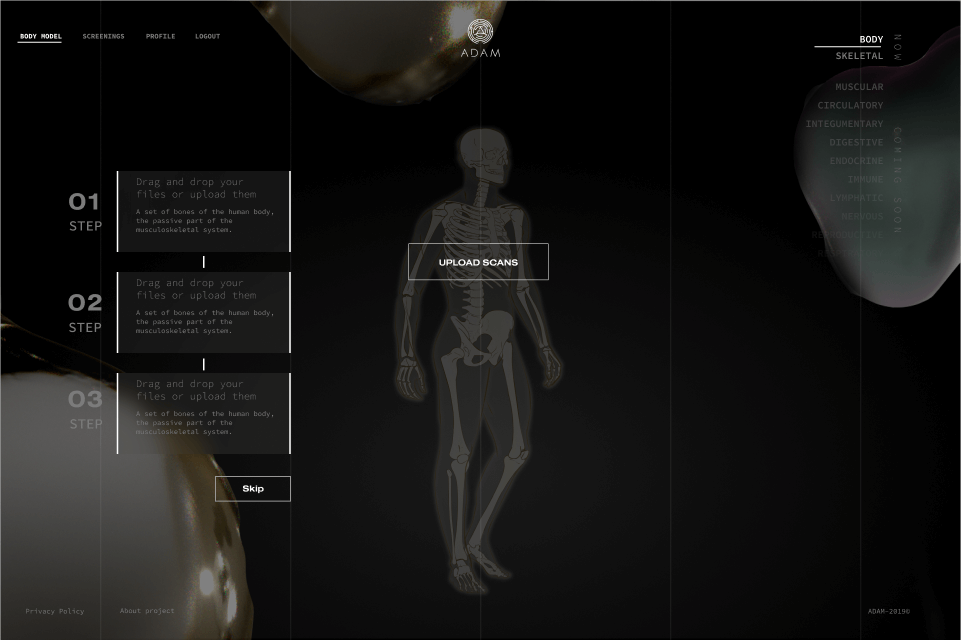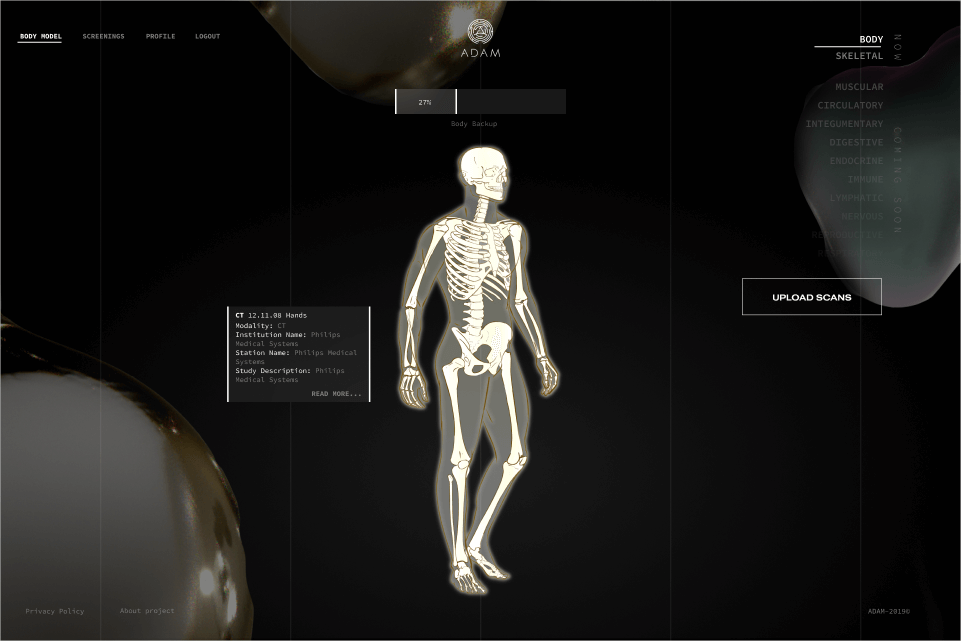Is it possible to print bones on a 3D printer? It will be possible soon.
The main goal of the cooperation between Softengi and ADAM was the development of an innovative and secure digital platform for keeping personal medical testing results in specialized cloud storage. In case of an emergency, competent medical service providers could use the information from the platform to recover damaged body parts and functions.
In other words, the clients of the innovative biotech company ADAM receive a unique chance to back up their skeleton in case they need restoration for further 3D printing. Revolutionary approach, isn’t it? A.D.A.M. addressed Softengi with the intent of platform development for data preservation and usage, and we’ve managed to meet their needs and provide them with tangible results.
Major Goals of the Development
The major goal of the partnership with Softengi was the development of a cloud service and a user-friendly interface for storing personal medical testing results saved utilizing the DICOM protocol (Digital Imaging and Communications in Medicine).
- DICOM data is to be processed and analyzed in a depersonalized manner for bone implant 3D printing technology testing and development;

- Another important goal was the possibility of downloading data in DICOM format freely in order to process the information from these images. DICOM (Digital Imaging and Communications in Medicine) is the most common digital imaging format for medical images, and the platforms allow reading DICOM files for avatar visualization and secure storage;
- Provide each ADAM user with the vision of his actual body backup in the form of an attractive virtual avatar in 3D;
- A third major goal concerned security, and it included compliance with GDPP, HIPPA regulations, and the “right to be forgotten.” Secure and GDPR-compliant storage of the information was another important goal of the project. ADAM also wanted to help its users visualize data with the help of a body avatar in a web application to get an engaging overview of my medical data integrity.

Result
Softengi developed an intuitive platform for the preservation of medical images and their visualization for further 3D printing of bone implants. For users, the ADAM platform is an intuitive web application built on the basis of ReactJS for the front-end and Heroku for the back-end.
Softengi implemented a number of architectural steps, such as privacy documents acquaintance and consent/denial procedures, TSL/SSL protocols implementation, and encryption of sensitive information in order to meet the security requirements of the ADAM platform. In the case of working with such sensitive information as medical information, security comes first.
PEOPLE ALSO READ

WhTech-WMS: Warehouse Management Software
With WhTech-WMS you can manage access and always know the location of your assets. It allows you to create custom reports and keep an eye on real-time alerts due to crashes or emergencies which gives you the opportunity to always monitor and understand the status of your equipment.

Police Records Management System For Caribbean Countries
Softengi designed, built, and installed the Police Records Management Information System (PRMIS) for the Caribbean region.

Industrial Asset Tracking: IoT Solution on Guard of Coal Mines
Softengi developed an IoT system that retrofits mining facilities with real-time underground tracking, automated dynamic gas detection, advanced connectivity, and alarm.

